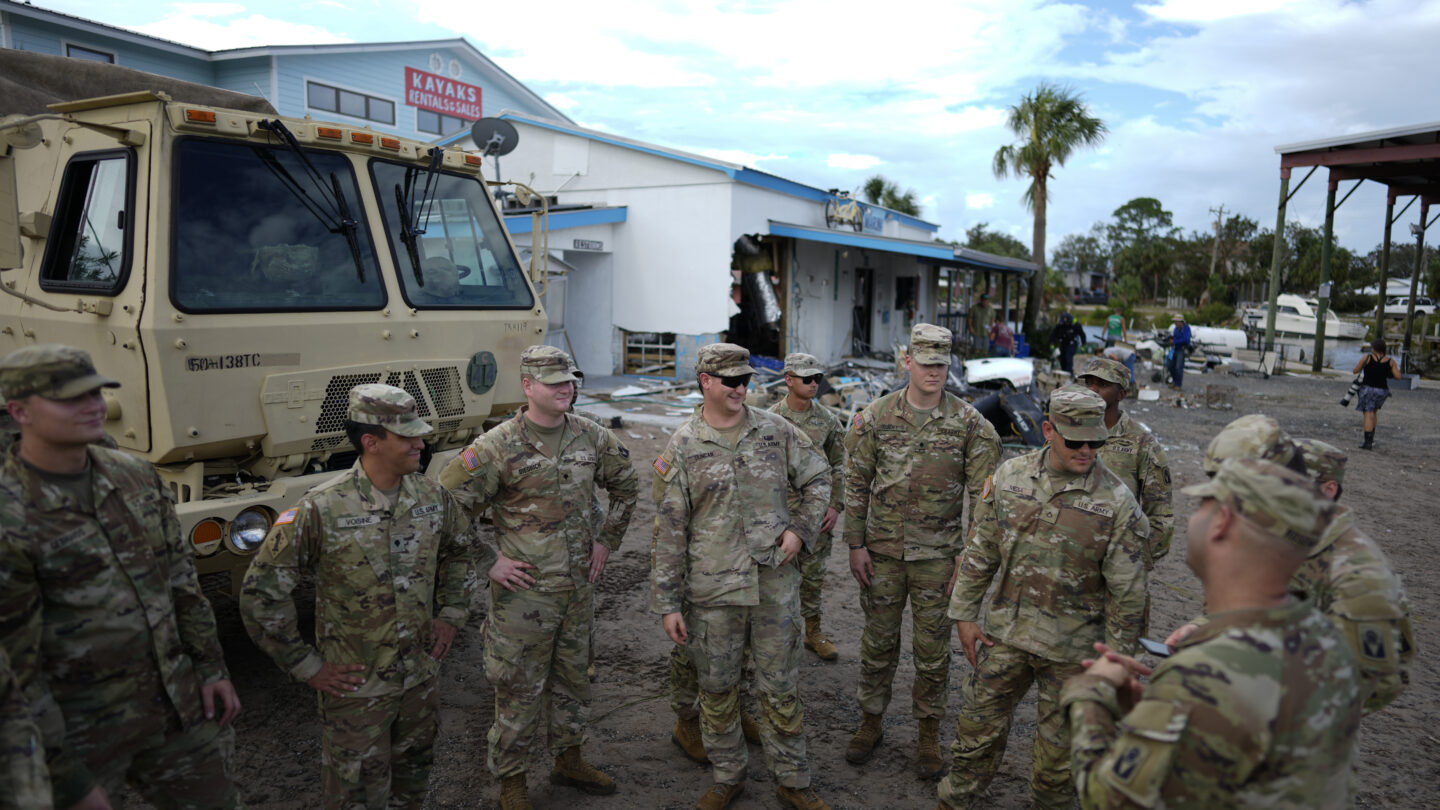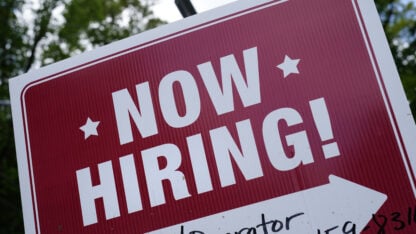The worst of Hurricane Idalia left residents of a region of tight-knit communities trying to find places to live as they rebuild, and waiting potentially weeks for electricity to be restored after winds and water took out entire power grids.
Idalia came ashore Wednesday in Florida’s sparsely populated Big Bend region, where places to fish and paddle are connected by swamps.
The scope of the disaster was coming into sharper focus Friday. A power cooperative warned its 28,000 customers it might take two weeks to restore electricity. Emergency officials promised trailers would arrive over the weekend to provide housing in an area that didn’t have much to begin with.
“We’ll build back. We’ll continue to fish and enjoy catching the redfish and trout and eating oysters and catching scallops and eating them,” said real estate agent Jimmy Butler, who lives in Horseshoe Beach, which saw some of the worst damage.
Idalia made landfall Wednesday near Keaton Beach with winds of 125 mph (200 kph) and a wall of storm surge that sent water over most people’s heads. The storm then tore through largely rural stretches of inland Florida and southern Georgia.
Around 120,000 homes and businesses in both states remained without power Friday, according to PowerOutage.us.
That included almost all 28,000 customers of the Suwannee Valley Electric Cooperative, which provides power to four inland Florida counties through 4,100 miles (6,600 kilometers) of lines — or enough to stretch to northern Alaska.
The co-op warned its customers to prepare to be without power for two weeks. It lost most of its big power lines that bring electricity into its territory, along with a lot of the grid that gets it into homes.
Nearly 300 line workers worked to get the power back on, and generators were being set up to help a few restaurants and other businesses operate.
“So even though we have fantastic employees and have arranged for a lot of help from contractors and other cooperatives, it’s going to take a while to get everyone’s power back on,” co-op CEO Mike McWaters wrote to his customers.
Residents, most of whom fled inland before or during the storm, helped one another clear debris or collect belongings — high school trophies, photos, records. They frequently stopped to hug, crying.
One Georgia resident was killed when a tree fell on him as he tried to clear another tree from a road. Officials said there appeared to be a storm-related death around Gainesville, Florida, but did not release details.
Democratic President Joe Biden planned to visit Florida on Saturday and survey the damage with Republican Gov. Ron DeSantis — who is campaigning to unseat Biden — but details were still being worked out.
“What we want to do is make sure that power restoration continues, that the relief efforts continue, and we don’t have any interruption to that,” DeSantis said Friday. “I’m sure they’ll be sensitive to that.”
Recovery continued in other places, too. In hard-hit Valdosta, Georgia, where nearly half the surrounding county’s 32,000 electric customers remained without power, the local university stuck with its plans to play football Saturday but moved the game from the evening to the afternoon because of power issues.
Idalia was a tropical storm by the time it reached South Carolina, but it brought a storm surge that — along with a periodic, unusually high tide — flooded Charleston and almost every beach community.
The storm eroded many of the dunes on the Isle of Palms, leaving crews scrambling to smooth out large drop-offs on beach access paths ahead of Labor Day weekend.
Beaches in Florida south of where Idalia’s center struck also suffered serious erosion. Pinellas County closed off 14 of 28 beach access walkovers in Indian Rocks Beach alone. The wooden walkway to the beach is now 4 feet (1.2 meters) above the sand in some places.
“We’ve probably lost about a third of the beach, if not more,” said Indian Rocks Beach City Manager Greg Mims.
The remnants of Idalia continued moving away from the U.S. on Friday. Forecasters warned it could become a tropical storm again Saturday and bring winds and rains to Bermuda, which also this week was lashed by winds and rain from the outer bands of Hurricane Franklin.









